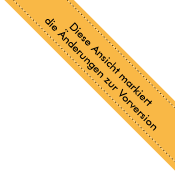Urothelkarzinom (Harnblasenkarzinom)
Erstellung der Leitlinie
Therapiestruktur
1 siehe Tabellen 7 und Tabelle 8
2 TURB – transurethrale Blasenresektion
3 Kontrolle mit transurethraler Nachresektion bei Tumoren mit hohem Risiko, ggf. auch bei intermediärem Risiko empfohlen
4 Chemotherapie-Frühinstillation – einmalig bei der TURB mit Mitomycin C, alternativ auch mit Doxorubicin/Epirubicin
5 intravesikale Therapie mit BCG (Bacillus-Calmette-Guérin) oder Mitomycin C über 1-3 Jahre; bei unzureichender Verfügbarkeit von BCG primär Mitomycin C
6 intravesikale Therapie mit BCG über 1-3 Jahre; bei Nichtverfügbarkeit von BCG ggf. Mitomycin C oder Gemcitabin intravesikal
7 plus bilaterale pelvine Lymphadenektomie
1 neoadjuvante Therapie = ddMVAC oder Gemcitabin/Cisplatin
2 plus bilaterale pelvine Lymphadenektomie
3 bei PD-L1 ≥ 1 (Zulassung Nivolumab); Pembrolizumab noch nicht zugelassen
4 noch nicht zugelassen
CPI = Immuncheckpointinhibitor
1 Präferierter Erstlinien-Standard
2 GC: Gemcitabin/Cisplatin; MVAC: Methotrexat/Vinblastin/Doxorubicin/Cisplatin
3 Atezolizumab-Zulassung bei PD-L1 ≥ 5%; Pembrolizumab zugelassen bei PD-L1 (CPS) ≥ 10
4 insbesondere bei PD-L1-Positivität
1 Atezolizumab-, Nivolumab- und Pembrolizumab-Zulassungen bestehen in dieser Indikation unabhängig von der PD-L1-Expression
2 Nach EV + Pembrolizumab: platinbasierte Kombinationschemotherapie; als Drittlinientherapie Monochemotherapie: Vinflunin, Carboplatin, Docetaxel, Gemcitabin, Paclitaxel
3 Bei Nachweis einer suszeptiblen FGFR3-Mutation (seit 8/24 zugelassen)
4 Best Supportive Care
Download
Reference:
Quellenangabe:
Onkopedia-Leitlinien werden kontinuierlich an den Stand des Wissens angepasst. Die jeweils gültige Version, AGB und Nutzungsbedingungen finden Sie unter www.onkopedia.com.
Für die kommerzielle Nutzung wenden Sie sich bitte an onkopedia@dgho.de.
Onkopedia guidelines are continuously adapted to the state of knowledge. The currently valid version, terms of use and general terms and conditions can be found at onkopedia-guidelines.info.
For commercial use, please contact onkopedia@dgho.de.



